
Mrs. Jeannette Kittredge Watson and Thomas Watson, Sr. From Think: A Biography of the Watsons and IBM (New York: Stein and day, 1969)
Metropolitan Museum of Art visitors who casually make their way into the Vélez Blanco patio period room next to the Museum's grand staircase are often surprised to encounter the entrance to our library, the Thomas J. Watson Library. Some confess they didn't realize The Met had a library at all, while others enter excitedly and ask, "Is this named after the Thomas J. Watson?" The answer is indeed yes. Watson, legendary chairman and CEO of International Business Machines (IBM) for over four decades, was also deeply engaged with The Met in a variety of roles from 1936 until his death in 1956.

Entrance to the Thomas J. Watson Library from the Velez Blanco patio, 1965. Look familiar?
In addition to being a Trustee of The Met from 1936 through 1956, Watson was also its Vice President from 1945 through 1951. As we celebrate The Met's 150th anniversary this year, it is particularly notable that Watson served as chairman of the 75th Anniversary Campaign beginning in 1945. That anniversary, which the Museum dubbed its "Diamond Jubilee," featured a variety of programs, initiatives, and events in 1946, culminating in the anniversary of the opening of its first exhibition in February 1947. The festivities included speeches, exhibitions, cross-promotions with films and plays, and related displays in Fifth Avenue store windows. Initially the campaign also sought to raise $7.5 million to underwrite a planned renovation and expansion of the Central Park building, but those plans were never realized. Watson's committee ultimately raised over $1 million (including IBM stock options worth $49,000 at the time) from 1,005 donors.
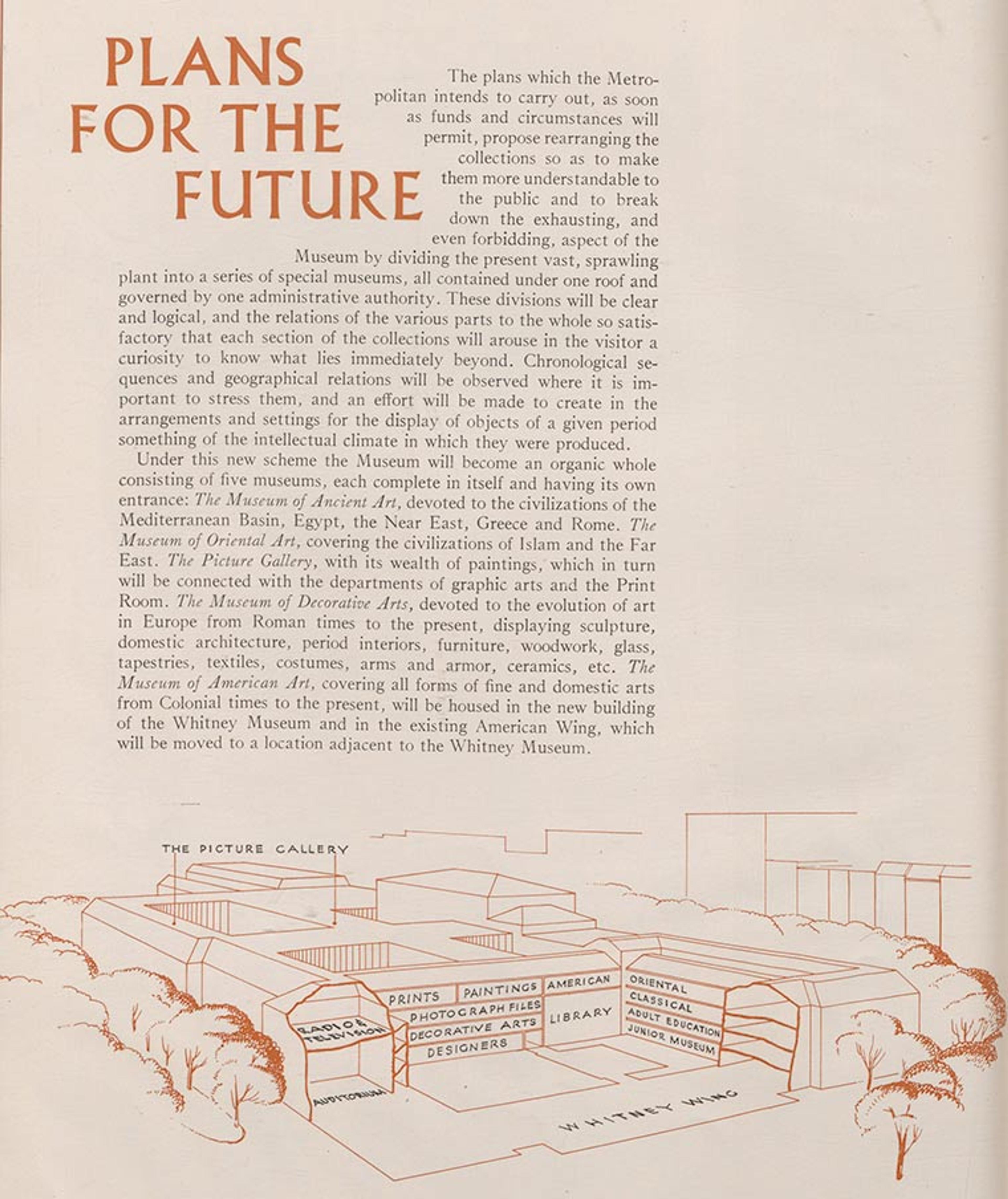
The 75th Anniversary Campaign, chaired by Watson from 1945–47, included an ambitious plan to renovate the building. From Educational Services (New York: The Metropolitan Museum of Art, 1946)

Letterhead designed for the 75th anniversary
During his long tenure as a Trustee, Watson served on six different Appointive Committees, including the Library Committee. He also donated two works of art to the Museum: portraits of Ebenezer Storer and Mary Edwards Storer by John Singelton Copley. And of course, his financial gifts to the Museum were significant. Over the course of his lifetime, he and his family donated more than $1 million to the Museum, earning him a spot on one of the esteemed gilded and engraved "Benefactors" plaques that line the Museum's Grand Staircase.
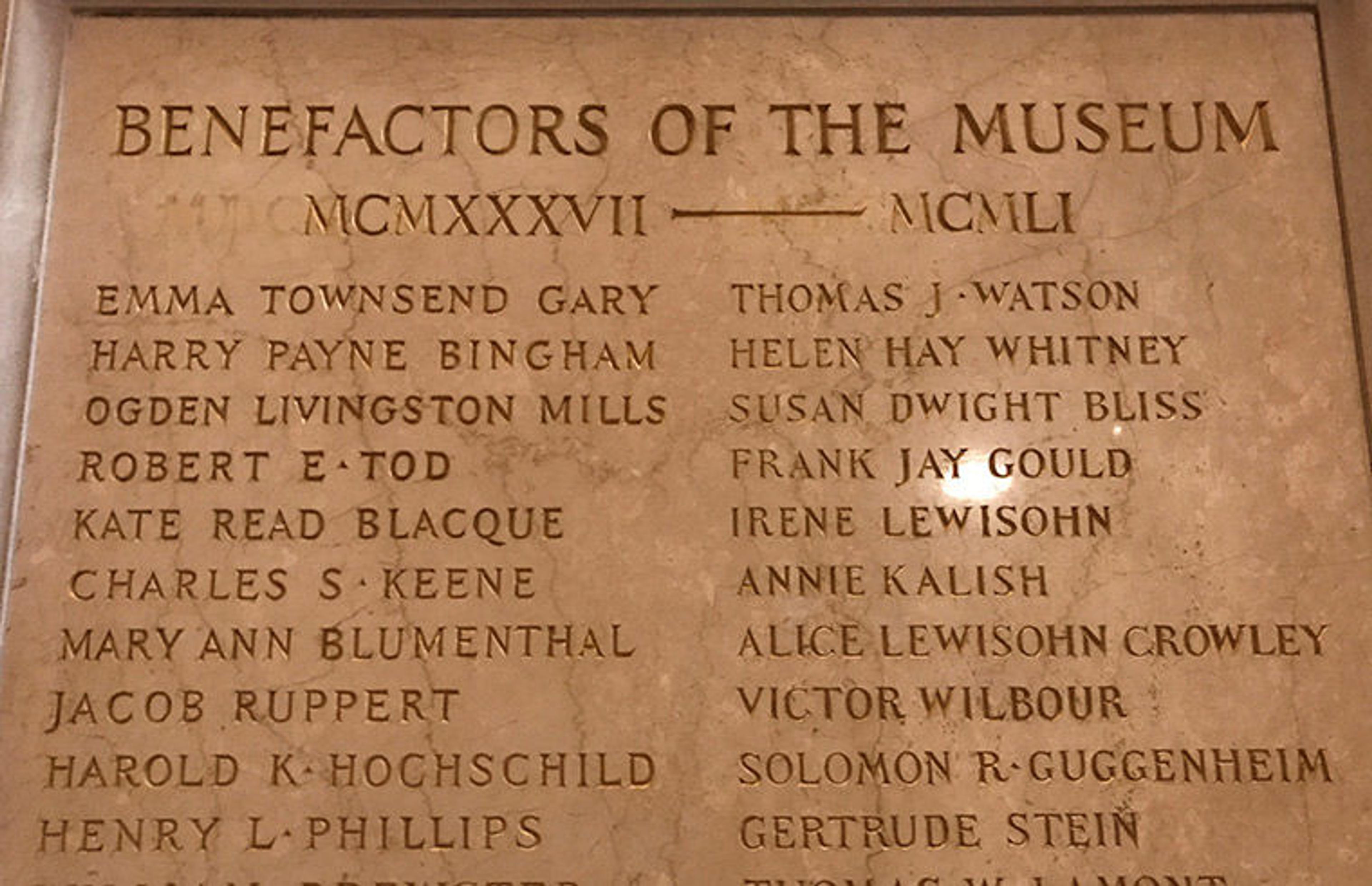
Plaque near the Museum's Grand Staircase recognizing Thomas J. Watson as Benefactor. Photo by the author
By the late 1950s, the Met's library—designed by the legendary architects McKim, Mead, and White, and completed in 1910—had long since outgrown its space. A Trustee committee formed in 1957 to tackle the problem, and the Museum's architects Brown, Lawford, and Forbes developed a $2 million plan to raze the old structure and build one that could accommodate the library's needs for the foreseeable future. Demolition began in 1962.

Demolition of the McKim, Mead, and White library structure ("Wing G") to make room for the new Thomas J. Watson Library, November 1962. Additional information on the first library building is in this post by my colleague Tony White.
Thomas J. Watson died on June 16, 1956 at the age of 82, and thus was not involved in the renovation planning for the new library. However, in February 1959, with the blessing of his wife, Jeannette Kittredge Watson, the Trustees voted to name the new library after him, "in recognition of his generous gifts and many years of devoted service to the Museum."
The new library, midcentury modern through and through, opened to great fanfare in January 1965. The New York Times noted that the preview party (attended by 6,500 members!) "had the feeling and look of a fete"—guests were even able to buy cocktails for the first time in the Museum's history as they dined on bœuf bourgignon. As a librarian, I was also delighted to read that "some members were observed putting the library to its proper use, pulling volumes from the shelves to sit down, or even to flop onto stairsteps and windowsills to read, oblivious of the gaiety that occupied most of the members."
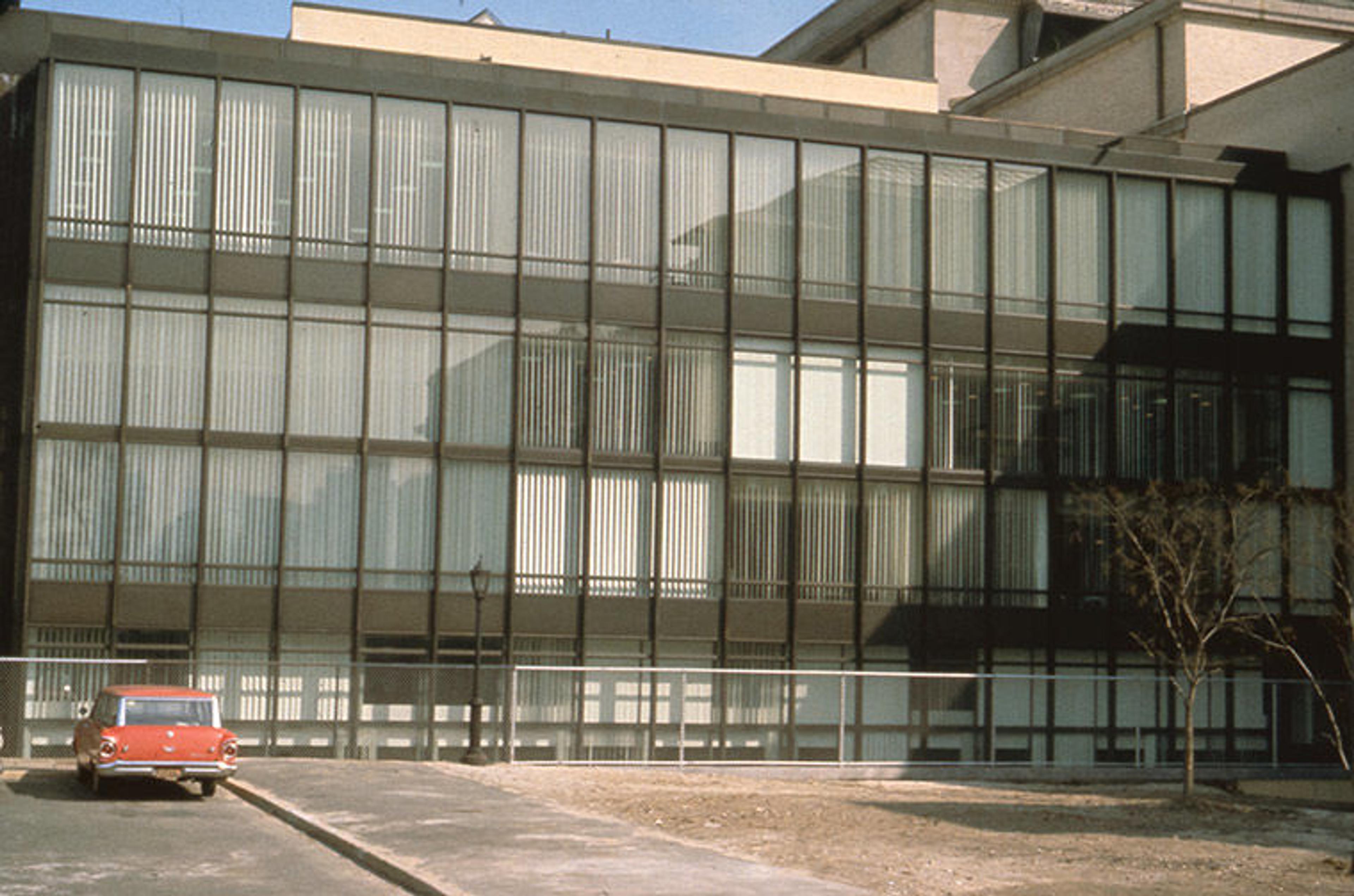
Exterior view, 1965. The Thomas J. Watson Library faced directly into Central Park until the early 1980s. That car though!
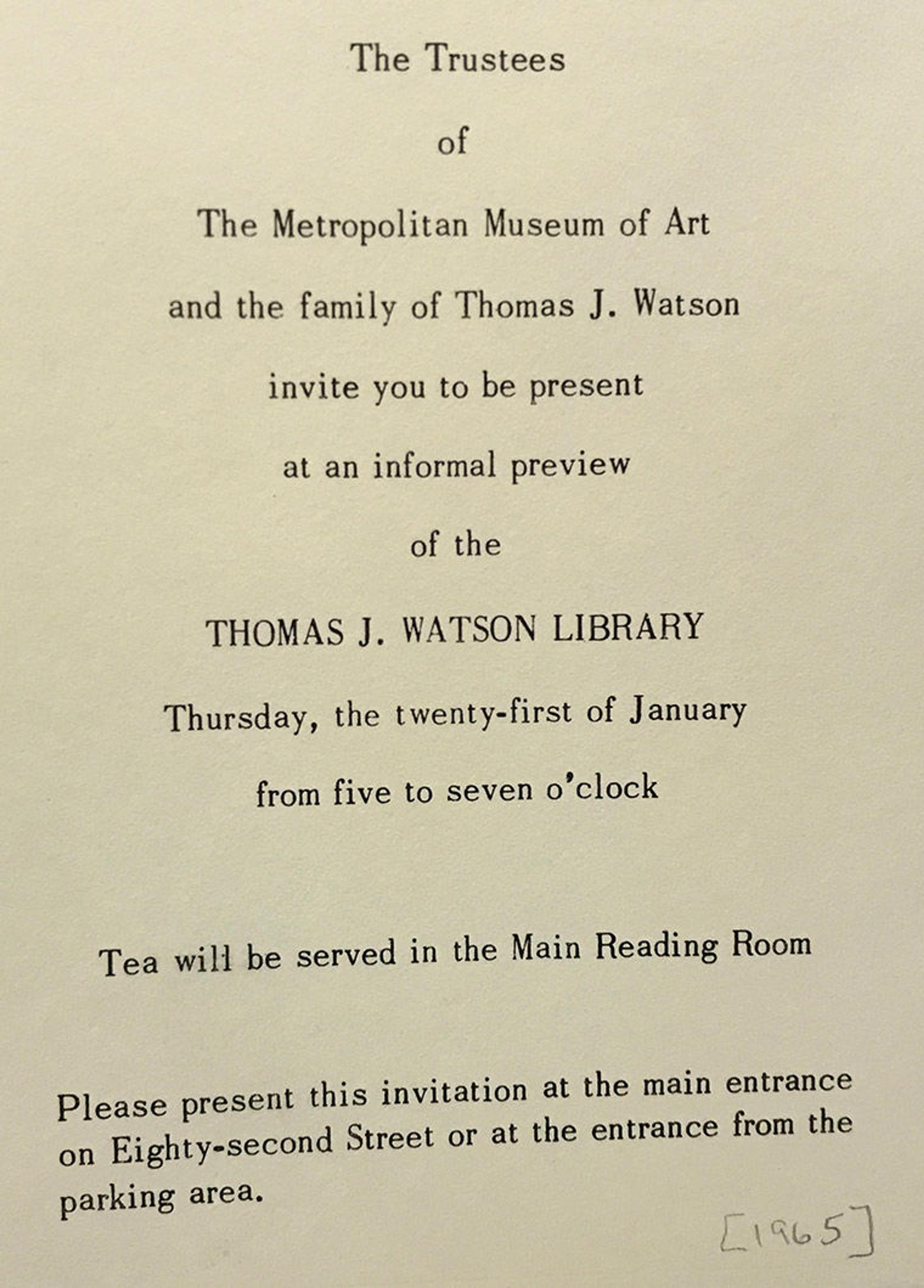
Invitation to a preview of the new Thomas J. Watson library, 1965. From Museum Archives
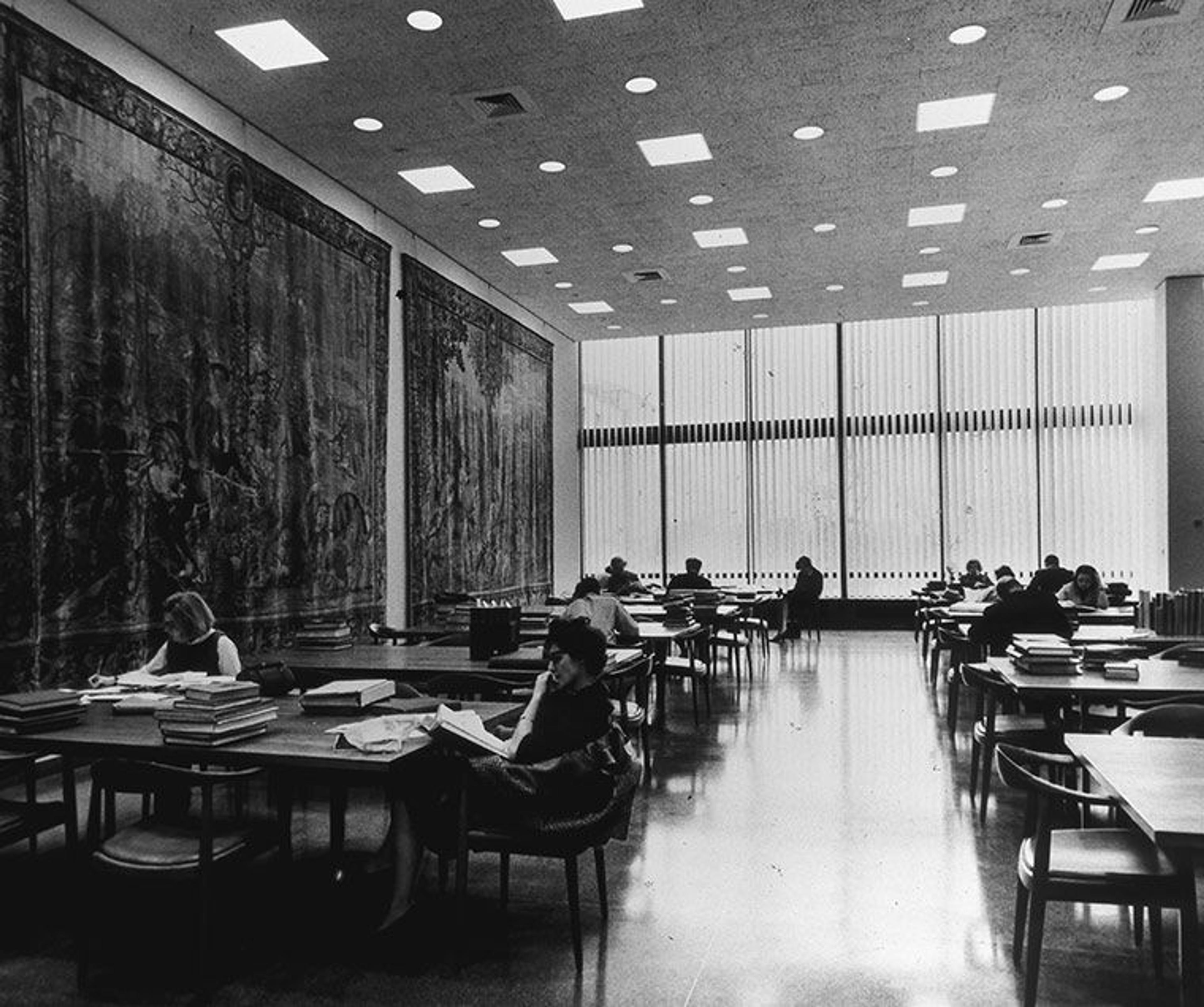
Reading room, 1965. Today's library researchers will no doubt recognize those iconic tables and chairs.
Additional information about the newly opened Thomas J. Watson Library—including some very retro 1960s photographs—is included in this post by my colleague Holly Phillips.
Thomas J. Watson passed his legacy of giving to The Met onto his children. In 1983, our reference room was renamed the Arthur K. Watson Reference Room after Watson's son, in recognition of substantial funds he and his family gave towards endowments for book purchases and the position of Chief Librarian. These funds still play a critical role in our mission to support the exceptional range and depth of research conducted at The Metropolitan Museum of Art and by scholars around the world.
So yes, our library is named after that Thomas J. Watson—most famous for his business acumen, but acutely in touch with the power of art, music, and continual learning. Watson himself declared that "the great accomplishments of man have resulted from the transmission of ideas and enthusiasm." And that is exactly what libraries and librarians strive to do every day.
For more in this series on the history of The Met’s libraries, click here.
